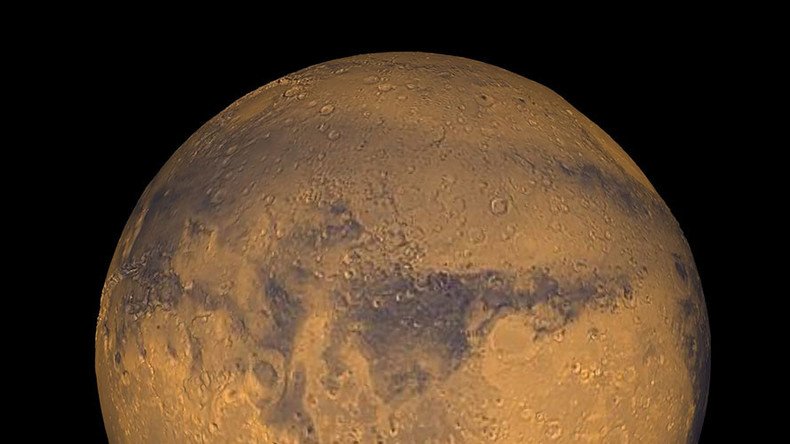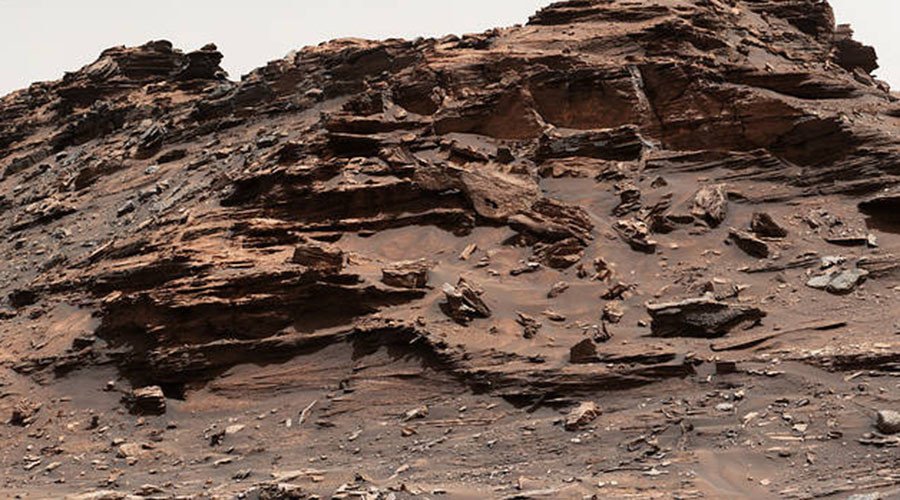2bn-yo water found deep underground offers clues to possible life on other planets

Evidence of a self-sustaining life-support system has been found in water cut off from the Earth’s surface for over 2.5 billion years. Scientists say it could also indicate the existence of sub-surface life on other planets, such as Mars.
A study published in Nature details the analysis of the ancient water, discovered almost 2.5km deep in a northern Ontario mine in 2013.
READ MORE: Mars 2020: 5 striking NASA images fostering hopes of finding Red Planet fossils (PHOTOS, VIDEOS)
The researchers tested the water for sulfur, which originates in the ‘pyrite’ mineral of surrounding rocks and is eventually broken down by the rocks' natural radioactivity and dissolved in the water.
They found that the sulfate level was 100 to 1,000 times less than what would be expected in the water supply, suggesting that low levels of microbes are already existing in the water and using up the chemical to survive.
“The wow factor is high,” Long Li, study author and an assistant professor at the University of Alberta, said in a statement.
Researchers led by #UofT's Barbara Sherwood Lollar find mysterious signs of life in ancient water https://t.co/jdRpgpanlz
— UofT News (@UofTNews) October 27, 2016
While this doesn’t definitively prove microbes are living in the water, the researchers are excited about the possibility that microbial communities have been evolving there for millions of years without either sunlight or atmospheric oxygen.
"This continues to open up our idea of how much of this planet is habitable," Barbara Sherwood Lollar, one of the researchers from the University of Toronto, told The Globe and Mail. "And it speaks to the habitability of Mars as well."
The surface of Mars is covered with billion-year-old rocks, and some areas of the Red Planet boast a similar mineral composition to that tested in northern Ontario.

“Because this is a fairly common geological setting in early Earth as well as modern Mars, we think that as long as the right minerals and water are present, likely kilometers below the surface, they can produce the necessary energy source to support the microbes. I’m not saying that these microbes definitively exist, but the conditions are right to support microbial life on Mars,” Li said.
Researchers in South Africa had previously found microbes living in ancient water in the cracks of rocks, however the Canadian water has been isolated for 10 times longer than the South African samples.
Li, whose team is now working with microbiologists to establish any traces of life in the water, says the best bet of finding life on Mars is to look beneath the surface.
The findings have also sparked excitement in scientific circles beyond those directly involved in the research.
Alex Sessions, professor of geobiology at Caltech, told the Globe and Mail that the development was significant.
“The thing that’s special is that the sulfate is being generated by radioactive decay,” Sessions explained. “It means that on countless planets, moons or asteroids that lack oceans, volcanoes and deep sea vents – all of which help support ecosystems on Earth – alien life may be surviving on little more than water, sulfur and radioactive elements.”












